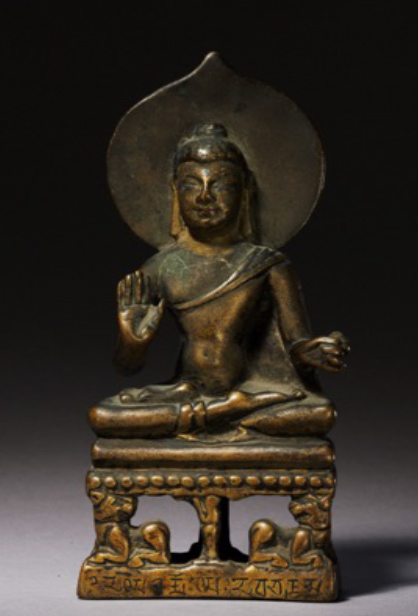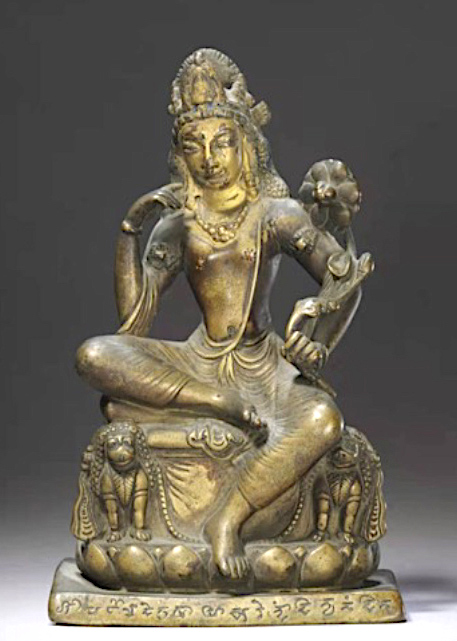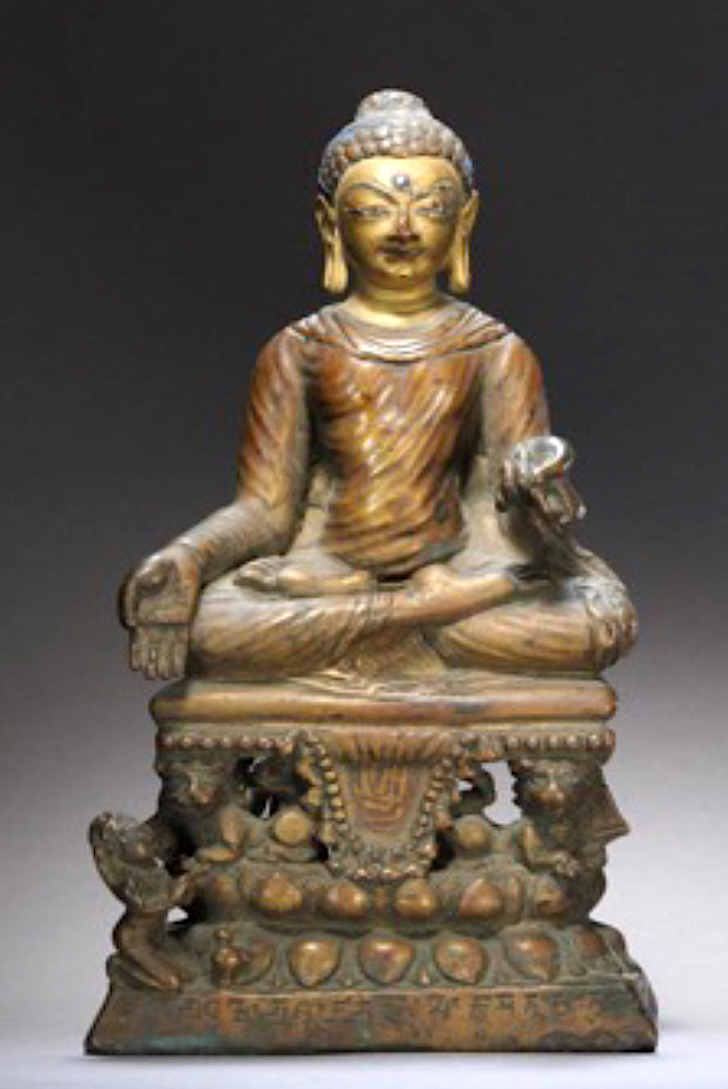conference by Haiyan Hu-von Hinüber, Fellow, Max-Weber-Center for Advanced Cultural and Social Studies, University Erfurt (Germany), Professor-at-large, Faculty of History and Cultural Studies, Shandong-University (China), Senior Researcher, Center of Buddhist Studies, Peking-University.
In recent years, the corpus of bronze sculptures originating from historical Northwest India has been greatly expanded thanks to a fruitful cooperation between Peking and Freiburg. Altogether nine inscribed bronzes, which can be traced back to the historical area of Gilgit, Swat or Kashmir have been studied and published on.
My talk focuses on three bronze sculptures, which are kept in the Palace Museum (Beijing) now. During the Chinese Qing dynasty (1636-1912) ruled by the Manchu emperors, who professed the Tibetan Buddhism, a number of prominent Tibetan religious leaders have traveled to Beijing at the Emperor’s invitation, such as the 5th Dalai Lama in 1652, the 6th Panchen Lama in 1780 and the 13th Dalai Lama in 1908. Thus, some old and inscribed bronzes – in addition to thankas and many others items – also found their way into the treasury of the imperial palace as precious gifts from Tibet.
To date, the ancient Sanskrit inscriptions engraved on these three bronzes have not been read (completely) or examined in connection with other inscriptions published in Europe. Therefore, my work starts with the paleographic analysis of the short inscriptions. Accordingly, all of these three sculptures can be dated to the first half of the 7th century, namely instead of the 8th or even the 9th century, as is often imprecisely stated in art historical publications or exhibition catalogues so far.
Also based on the inscriptions, the origin of these bronzes can be traced back to the former kingdom of Palola Ṣāhis in northwestern India. It seems that this “post-Gandhāra” school of art was closely associated with this royal family; according to the inscriptions and the travelogues of Chinese pilgrims, the Palola Ṣāhis ruled the area around Gilgit and beyond from c. 585 to 720. However, when the Tibetans conquered this area in the 8th century during the powerful Yarlung dynasty (7th-9th cent.), both art objects and artists were apparently brought to Tibet over time, which obviously helped create the basis for the unique high culture of Tibetan art foundry.
Apart from some interesting stylistic features as shown at the rediscovered bronzes, their ancient Sanskrit inscriptions, which follow the traditional form of a typical gift inscription of the Gupta period (4th-6th cent.), also complement our knowledge of the social background of the donors, who represent a wide spectrum of the society of that time: lay followers, the monks, the officials, and the members of the royal family.
Yet, many questions remain unanswered, especially in regard to the exact time and the Himalayan routes by which these bronzes were brought to Tibet, and in which monasteries they had been kept for several hundred years or even longer, and why some of them were chosen as gifts and brought to Beijing, etc. Let´s hope that some details can be clarified with the help of Tibetological research.
 |
 |

